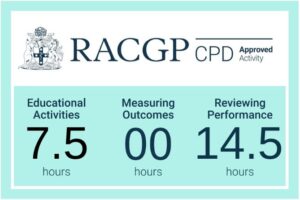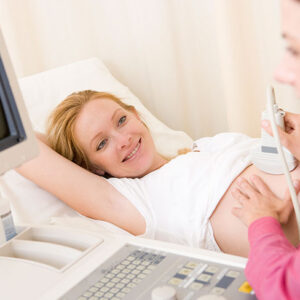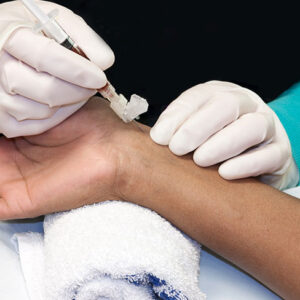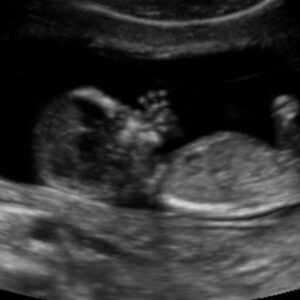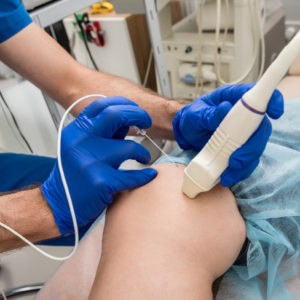Learn more about the Emergency Ultrasound for Rural and Remote Medicine Course
Objectives
On completion of this three day clinically focused emergency ultrasound training program, emergency physicians will:- Use ultrasound system controls to optimise imaging for accurate diagnosis
- Develop proficiency in probe manipulation to efficiently acquire diagnostic images
- Describe the limitations and clinical integration of the following ultrasound examinations:
- eFAST
- AAA
- Early pregnancy assessment
- DVT
- Gallbladder
- Use a systematic approach to conduct ultrasound assessment of
- trauma
- abdominal aortic aneurysms
- right upper quadrant pain
- pain and bleeding in first trimester
- intrauterine pregnancy or ectopic implantation
- deep vein thrombosis
- Demonstrate ultrasound guided needle placement in-plane and out of plane for vascular access and procedural applications using ultrasound simulators
CME recognition
|
|
|
|
|
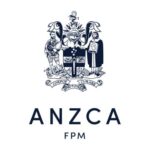
CPD Short Format Learning
|
|
|
CPD Accredited Activity |
Features
- Modules (total) 8
- Skill level Novice
- Duration (days) 3
- Lectures (hours) 4.5
- Scan time (hours) 15.25
- Clinician No
- Zedu redo Yes
Class times
Day 1: 0830 – 1700
Day 2: 0900 – 1700
Day 3: 0900 – 1700
Modules
Image optimisation – interactive practical session
- Explore system controls
- Understand the impact of optimisation on the image
- Presets, frequency, depth, focus and gain
- How to label the image
- How to store and review images
Probe Manipulation
- Probe care
- Probe moves
- Probe grip
- Probe and screen orientation
- 3D awareness of the anatomical position of the organs
EFAST
- eFAST protocol
- Scan technique
- the “views”
- recognise normal and abnormal imaging
- qualitative estimates of free fluid volume
- Techniques to improve imaging
- limitations and pitfalls
- clinical utility and application
Scanning, scanning and more scanning of real people
AAA
- scanning technique
- sonographic anatomy
- how to measure a AAA
- recognise normal and abnormal imaging
- Techniques to improve imaging
- Diagnostic criteria
- limitations and pitfalls
- clinical utility and application
Scanning, scanning and more scanning of real people
Procedural Guidance
- Principles of needle guidance
- Terminology – In-plane, out-of-plane, LAX and SAX
- Techniques to improve imaging
- limitations and pitfalls
- sonographic anatomy of the region
- patient positioning
- equipment preparation
- ergonomics of safe procedures
- Clinical utility and applications
Scanning, scanning and more scanning of real people
Identify the anatomy and needle approach on real people
Stick needles into a wide variety ultrasound phantoms for procedural practice (we want our patients to come back :))
Biliary
- scan technique
- patient positioning
- recognise normal and abnormal imaging
- gallstones
- acute cholecystitis
- choledocholithiasis
- gallbladder wall thickness
- bile duct measurement
- techniques to improve visualisation
- limitations and pitfalls
- clinical utility and application
Scanning, scanning and more scanning of real people
DVT
- anatomy of the vessels
- patient positioning
- hip to knee scan technique
- compression technique
- utility of Doppler
- recognise normal and abnormal imaging
- diagnostic criteria
- techniques to improve visualisation
- pearls and pitfalls
- clinical utility and application
Scanning, scanning and more scanning of real people
Early Pregnancy Assessment
- scan technique and approach to the early pregnancy evaluation
- recognise normal and abnormal imaging
- sonographic signs of non-viable pregnancy
- evaluation of ectopic pregnancy
- evaluation of pain and bleeding
- sonographic signs of gestational sac mimics
- sonographic signs of abnormal implantation
- diagnostic criteria for pregnancy failure
- techniques to improve visualisation
- limitations and pitfalls
- clinical utility and application
Scanning, scanning and more scanning of real women in their 1 st trimester of pregnancy
CME details
ACEM | Approved for 25 ACEM CPD hours
ACP | This course is recognised by the Australasian College of Paramedicine for CPD hours
ACRRM | Approved – 24 Core CPD Hours | Learning Areas: O&G, IMAG, Procedural skills (PROC) | Domains: Respond to medical emergencies, Provide safe medical care while working in geographic and professional isolation
ANZCA | Participants in the ANZCA CPD program can claim attendance under the Knowledge and Skills category ‘Short format learning’
ASUM | CCPU Accredited Units: AAA, eFAST, Vascular Access, Basic Early Pregnancy, Biliary
RACGP | CPD Accredited Activity 391029 | Educational activity hours: 7.5 | Reviewing performance hours: 14.5 | This activity has been approved for Rural Procedural Training Grant: Emergency Medicine Grant (3 days) and Obstetric Grant (3 days)
Approved by ACRRM and RACGP for the Rural Procedural Grants Program – GPs can receive $2000 per day for a maximum of 10 days of training per financial year, GPs providing hospital based emergency services can receive up to three days of eligible training per financial year.
A great training course is only the beginning of your ultrasound learning journey
To help you master ultrasound and lasting change from training we engage you from the outset
Before your course:
There are pre course activities & access to preparatory learning resources to maximise your in-class experience
During your course:
- Short, sharp information sessions to provide foundational knowledge and clinical context
- Lots of hands-on practical sessions with real people to scan (including for TV and obstetric scans). Our standardised patients models vary in age, size, shape and mobility to make the transition to clinical reality easier.
- Case studies led by practising clinicians to demonstrate clinical utility
- A variety of different machines to learn on
- At the conclusion of your course we’ll lead you to create a skills development action plan, creating a pathway that you can use to apply your newly acquired skills, promote clinical integration and ultimately reach your final objective – ultrasound competency
After your Emergency Ultrasound Training:
The learning continues
- We encourage self-directed learning in the workplace with structured active learning plans
- A great selection of free access online medical ultrasound (FoamUS) learning resources
- You can subscribe to the weekly wrap – a weekly curation of ultrasound related hot tips and journal articles
- Be a part of our community of clever – Join our peer support network with our monthly “Coaching Corner” sessions. Send in your questions, join the live online meeting and have your questions answered.
The Zedu Redo – our commitment to you
We encourage you to refresh your training with us by taking up the opportunity to return within 12 months and do a complimentary redo of this course at no cost (subject to availability)
More Ways Zedu Can support your ultrasound skills development:
- Image review – details here
- Follow-up coaching with our Zedu coaches
- Coaching corner – monthly webinar
Emergency Ultrasound for Rural and Remote Medicine Course
$3,465.00
Learn the fundamentals of point of care ultrasound essential for the rural generalist. Assess your patients at the bedside and increase your diagnostic capabilities for improved patient outcomes.
Select your date and enter your details to start your journey with us – we can’t wait to meet you.
Is your preferred course date full? Join our Waitlist Here
You may also like…
-
Core Obstetric Ultrasound Course$2,399.00
Discover and explore the clinical utility of ultrasound evaluation in pregnancy to guide patient management. Complete your training curriculum requirements for advanced DRANZCOG and 1st and 2nd…
Select options- 2 days -
Early pregnancy assessment
Fetal biometry
AFI
Doppler
-
Essentials of Musculoskeletal (MSK) Ultrasound Course$2,399.00
Differentiate musculoskeletal injury from arthritic change and manage your patient’s problem today. Guide common injections and get better treatment outcomes for your patients.
Select your date and enter your…
Select options- 2 days -
Needle guidance techniques
Injections and protocols
Musculoskeletal applications
- upper limb
- lower limb
-
Ultrasound Guided Vascular Access Course$1,250.00
Avoid complications and learn how to use ultrasound to guide your difficult peripheral and central vascular access procedures.
Select your date and enter your details to start your…
Select options- 1 day -
Vascular access
-
First (1st) Trimester Ultrasound Course$1,250.00
At the completion of this course you will have the skills to evaluate for ectopic pregnancy, confirm an intrauterine pregnancy or discover the cause of your patient’s pain and…
Select options- 1 day -
Early pregnancy assessment


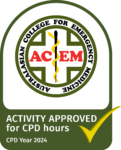
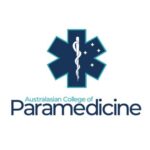
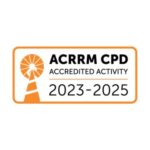
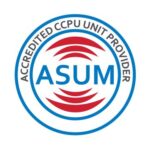 AAA, eFAST, Vascular Access, Basic Early Pregnancy, Biliary
AAA, eFAST, Vascular Access, Basic Early Pregnancy, Biliary
